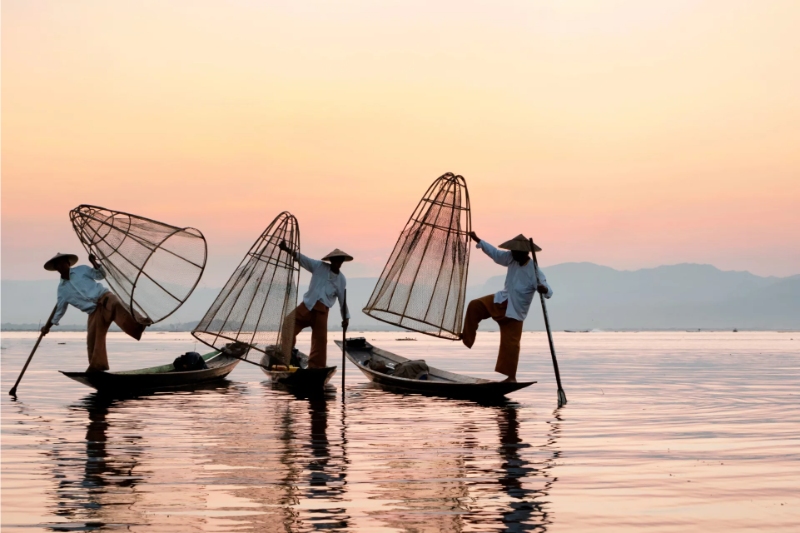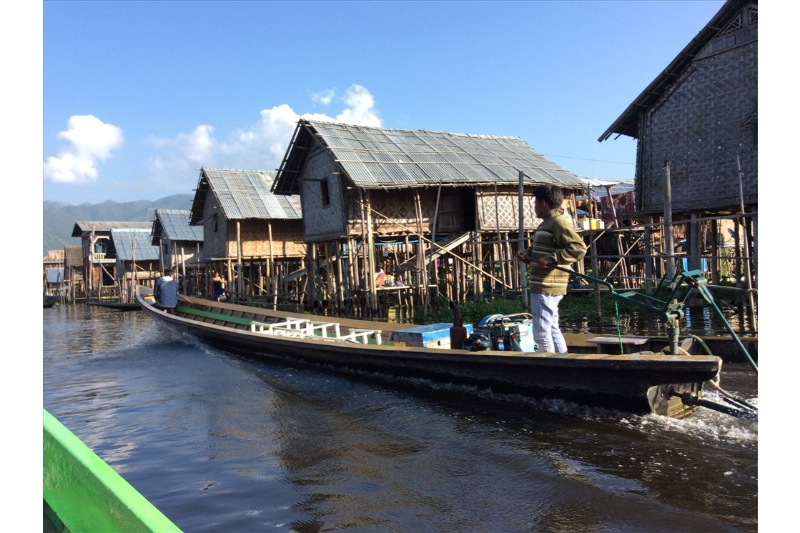
Inle Lake and its original floating gardens
Inle Lake, the gigantic and mysterious water current that flows along the Burmese mountains and hills, is the must-see destination for travelers from all over the world. They are intrigued, fascinated by the extremely skillful gestures of the fishermen, by the mythical atmosphere around the monasteries and ancient sanctuaries, by the tradition of silk and lotus weaving crafts… and of course by the floating gardens testifying to an authentic agricultural culture that is found nowhere else in the world.
Gardens weave floating islands

Stretching 22 kilometers from north to south and 11 kilometers at its widest point, Inle Lake is located at an altitude of over 800 meters. With an average depth of 2 meters in the dry season and 4 meters in the rainy season, this lake has been for several centuries the living space of the Inthas population, the lake people who lead their way of life in harmony with the environment thanks to a sustainable aquatic and agricultural economy.
The Inthas have in fact a completely original method of growing flowers and vegetables on small artificial floating islands which can only be observed on their magnificent lake.
These are masses of tangled plants over a thickness of more than a meter that have formed over time. On this carpet of natural vegetation on the water surface, the farmer places mud and algae brought from the depths of the lake to make “growing beds”, the land where they bury seeds or transplant plants from a nursery. Thus these small artificial islands host tomato and flower crops… In order to prevent the floating gardens from drifting, the water being shallow in these places, the farmers drive large bamboo stakes into the ground.
The farmers move between the plants in motorless boats, wrapping the single oar with one leg to give it a circular motion. This riverside spectacle is impressive to see.
It should be noted that floating vegetable gardens now cover a quarter of the lake’s surface area. The Inle tomato specialty, highly appreciated and picked when the fruits are still green, is sold in all the markets of the country during the eight months of production. Flowers, pod vegetables, squashes and cucumbers are also found in the production list of the “inlenois”. Their agricultural products are now recognized as labor in Burma.

For several years, Inle Lake has been under threat. The fragile balance between natural resources and their exploitation has been put on alert. The danger is due to polluting fertilizers and pesticides from China and Thailand, as well as uncontrolled tourist development since the country opened up in 2011. But the fault lies mainly with the deforestation of the neighboring mountains which precipitates silt into the lake, causing it to lose a third of its surface area since the 1930s. According to some specialists, the disappearance of Inle Lake within 50 to 75 years is probable.
To prevent the lake from drying up and its waters and floating gardens from becoming poisoned, the Burmese government is beginning to take measures, particularly to reduce the number of water hyacinths, invasive plants that have come from elsewhere.
For this jewel of the golden country to shine again, firm and effective strategies must be implemented by all political, economic, tourist and local stakeholders.
